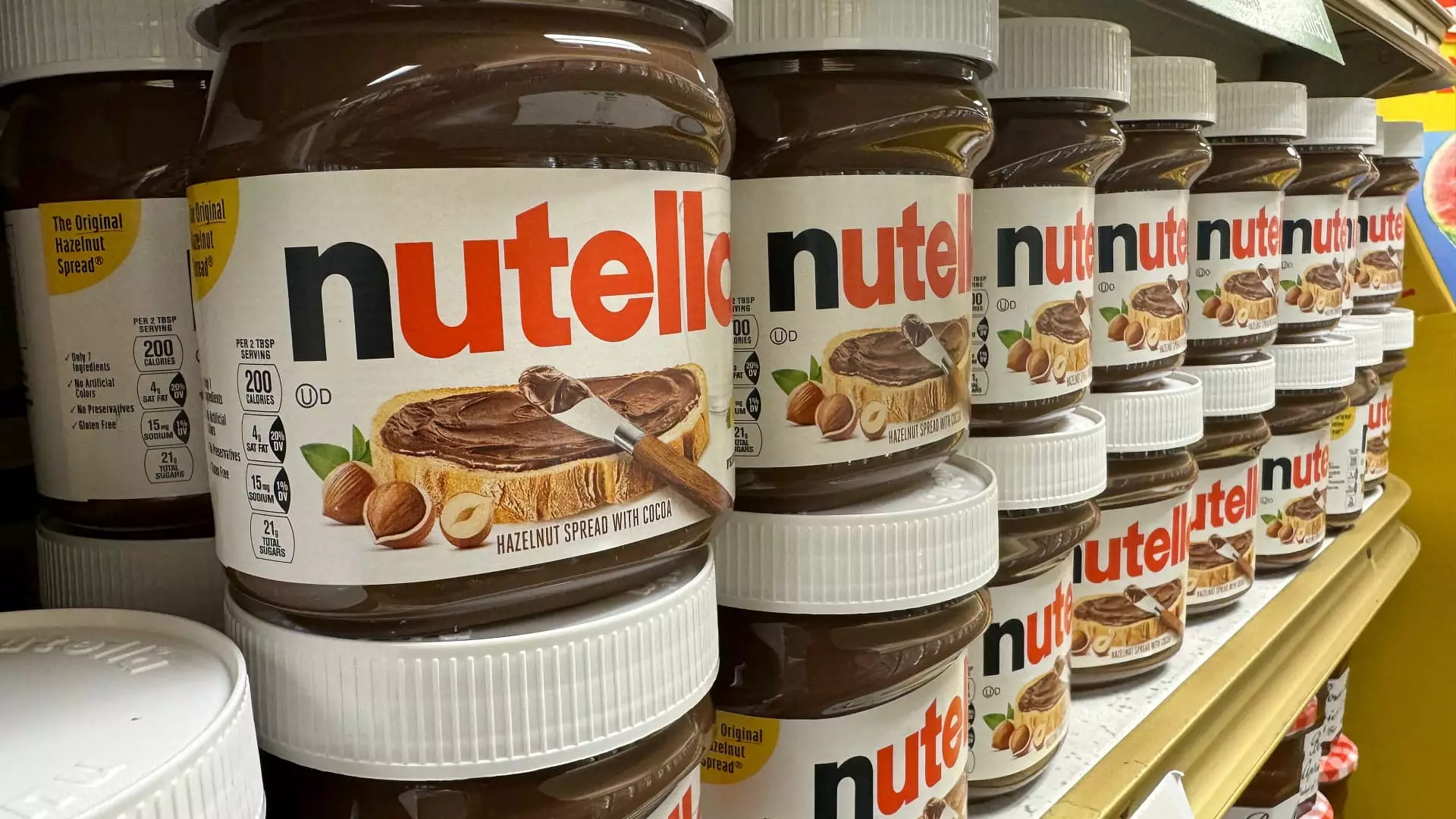In an audacious move to shake up the American candy market, Ferrero North America is ambitiously rolling out a host of new products, including a Nutella-infused with peanuts, Ferrero Rocher spheres evolving into new square formats, and even Dr Pepper-flavored Tic Tacs. This strategy, unveiled just prior to the much-anticipated Sweets and Snacks Expo, signals Ferrero’s intent to captivate the growing U.S. confectionery consumer base. While the Italian-based confectionery giant, now headquartered in Luxembourg, has a rich history that spans nearly fifty years in North America, its recent foray into investment indicates a determined pivot towards genuine market integration and innovation.
Ferrero’s strategic expansion isn’t merely about introducing novel products; it’s about reshaping brand identity to resonate with American tastes. By acquiring renowned brands like Fannie May, Brach’s, and even the iconic Butterfinger through Nestle’s U.S. candy division, Ferrero is staking its claim as a formidable contender in the candy business, where it currently ranks third after Hershey and Mars. This incorporation of previously established brands into Ferrero’s portfolio serves a dual purpose: it appeals to consumer nostalgia while enabling the company to leverage existing market share.
Innovation: The Key to Winning Hearts
The heart of Ferrero’s strategy rests solidly on innovation. In a notable shift, the company is set to introduce Nutella with a peanut twist, a move Lindsey, the president of Ferrero North America, claims is designed to “Americanize” their offerings for local palates. The perception of Nutella as a beloved classic could pair beautifully with the savory richness of roasted peanuts, potentially creating a new fan-favorite spread. In culinary terms, this type of innovation can often result in a product that captures both curiosity and indulgence—an appealing mix for the modern consumer.
Furthermore, the new Ferrero Rocher squares aim to diversify the product’s appeal by providing multiple varieties like milk, dark, and caramel. This type of adaptation not only maintains the brand’s luxurious identity but also embraces the consumer trend towards customization. The packaging may also play a pivotal role, introducing a snappable format more suited to on-the-go lifestyles, particularly among Millennials and Gen Z, who increasingly favor convenience as a top purchasing criterion.
A Balanced Sourcing Strategy
Ferrero’s decision to localize its supply chain by sourcing hazelnuts from Oregon is a smart move, especially in a climate where globalization is often scrutinized. This strategy strengthens Ferrero’s U.S. operations while ensuring quality oversight in ingredient sourcing—an important factor for contemporary consumers who tend to value transparency and ethical practices in food manufacturing. Additionally, Lindsey’s comments regarding investments made prior to recent tariffs effectively highlight Ferrero’s long-term vision for North America, showing that they were preparing to adapt well before external pressures necessitated it.
However, it is not without risk. As competitive pressures mount, Ferrero must remain vigilant. The U.S. candy market is notorious for its rapid shifts in consumer preferences. While the innovations seem promising, they could easily backfire if the company misjudges the taste profiles or fails to effectively communicate the uniqueness of the new products.
Going Big: Marketing and Consumer Engagement
Ferrero isn’t just stopping at product innovation. Lindsey hints at substantial upcoming marketing endeavors, specifically targeting high-profile events like the Super Bowl and the World Cup. This approach is not only a gambit for expansion but a bold signal of intent, positioning Ferrero on a global stage meant to captivate diverse audiences. They appear prepared to leverage the emotional resonance of shared cultural experiences, which is crucial for any brand aiming to establish itself firmly in the U.S.
Nevertheless, the potential for dilution exists. By heavily investing in marketing, Ferrero risks overexposing its products before they’ve had a chance to prove themselves in the marketplace. Authenticity in branding is paramount; consumers today are increasingly savvy and may recoil if they sense any disconnect between the hype and the reality of their actual experiences with new Ferrero offerings.
Ultimately, the success of Ferrero’s gambits in the U.S. market hinges on its capacity to create products that not only appeal to American tastes but intrinsically connect with consumers’ desires for indulgence and personal relevance. The unique spin on established classics raises expectations and opens the door for unforgettable experiences in the candy aisle. The stakes are high, but for Ferrero, they appear determined to create a space where it can thrive as a formidable contender in the U.S. candy landscape.

